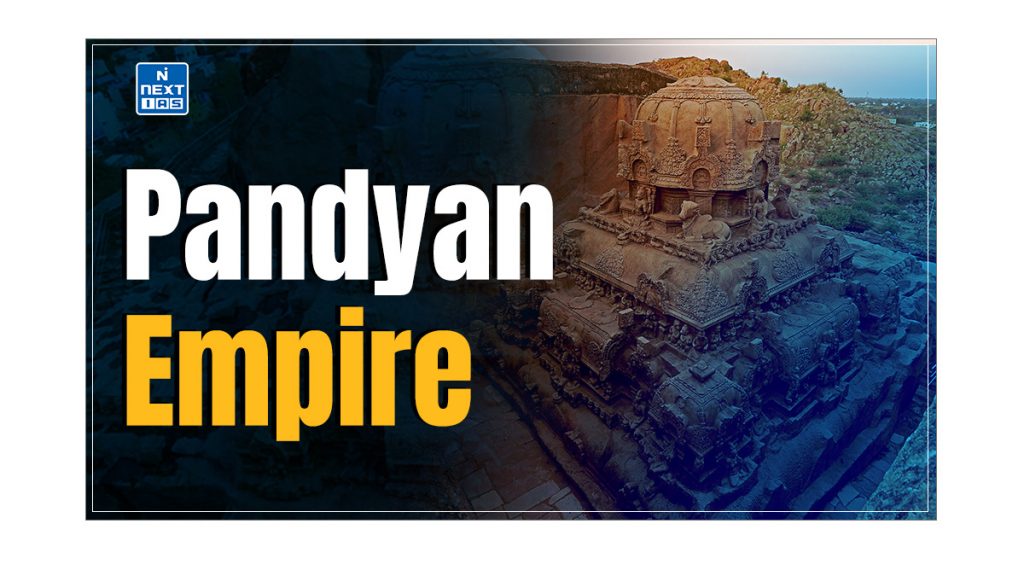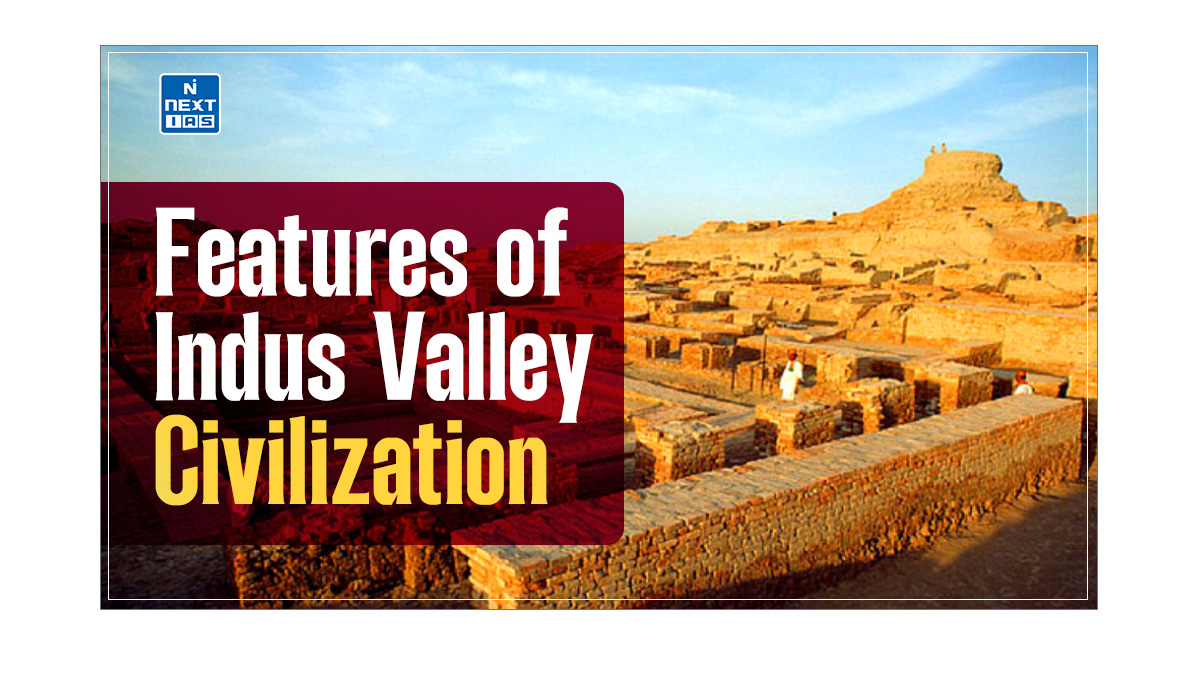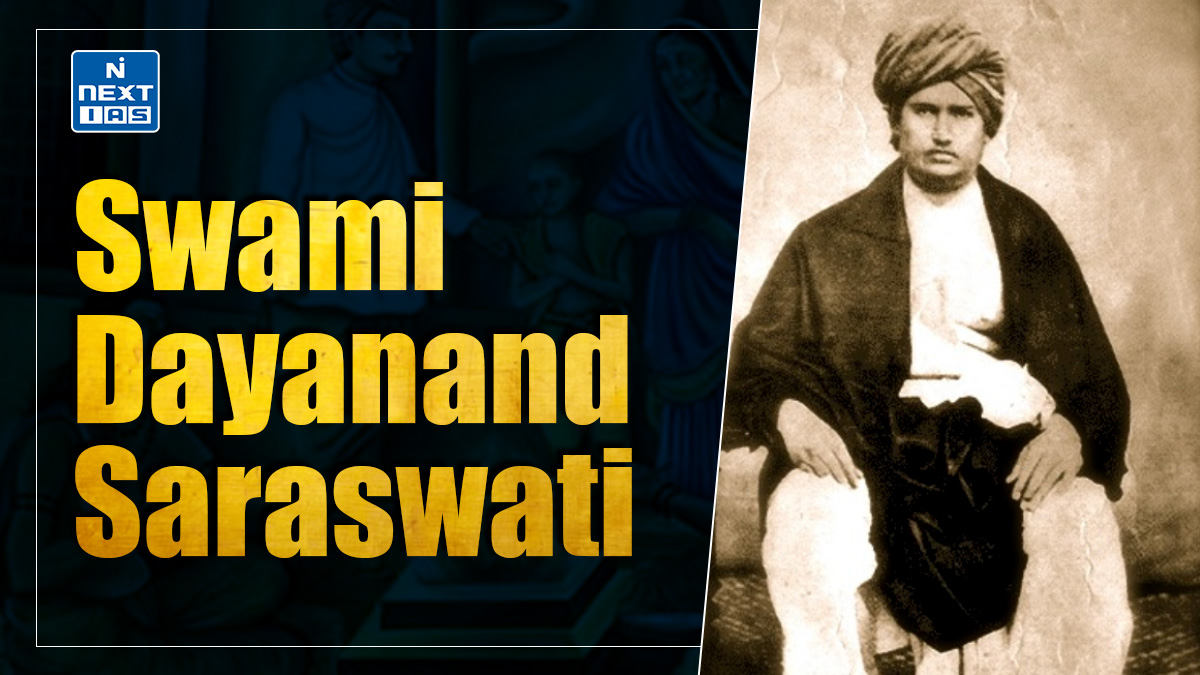
The Pandyan Empire was an ancient and influential dynasty that ruled over southern and southeastern parts of the Indian peninsula, with its capital at Madurai. Its significance lies in its prosperous trade, rich cultural heritage, and role in the early history of Tamil Nadu. This article aims to study in detail the key aspects of the Pandyan Empire, including its historical development, economic prosperity, and cultural contributions.
About Pandyan Empire
- The Pandya Empire was one of the most ancient and prominent dynasties of South India. It flourished primarily in the southern and southeastern regions of the Indian peninsula, with its capital at Madurai.
- Renowned for their wealth, pearls, and thriving trade relations, especially with the Roman Empire, the Pandyan Empire played a crucial role in the early history of Tamil Nadu.
- The Pandyan Empire was noted for its rich natural resources, including spices, ivory, and textiles, which made them significant players in international trade.
- The Pandya rulers were strong patrons of Tamil culture and literature and adherents of Vedic traditions, with Brahmans holding an esteemed position in their society.
- The Pandyan Empire reached its height during the Sangam Age, and its rule is celebrated in Tamil literature, but it faced a decline following the Kalabhras’ invasions.
- The Pandyan Empire was first mentioned by Megasthenes, who noted their fame for producing pearls.
- The Pandyan Empire enjoyed prosperity and wealth due to strong trade relations, especially with the Roman Empire.
- The Pandyas even sent embassies to the Roman emperor Augustus.
Founder of Pandya Dynasty
- The founder of Pandyan Dynasty is believed to be Korkai who has its origins in ancient times.
- This early Tamil dynasty emerged around the 6th century BCE and played a crucial role in South Indian history.
- The Pandyan Empire was known for its strong maritime trade networks, especially in pearls, and its patronage of Tamil literature and culture.
- Over the centuries, the Pandyan Empire became one of the three major Tamil dynasties, alongside the Cholas and the Cheras.
Key Rulers of Pandyan Empire
- One of the most notable rulers of the Pandya dynasty during the Sangam Age was Uggira Peruvaludhi, the last famous king of this period.
- The reign of the Pandyan Empire marked the final flourishing phase of the Pandya kingdom, particularly noted for its wealth, cultural patronage, and diplomatic relations with foreign powers such as the Roman Empire.
- Like his predecessors, Uggira Peruvaludhi upheld the traditions of Vedic sacrifices and religious observances, which had earned the Pandya kings a respected position in the broader Indian subcontinent.
- However, the Pandyan kingdom weakened after Uggira Peruvaludhi’s rule due to external invasions.
- The most significant challenge to their authority came from the Kalabhras, a dynasty that disrupted the established political order in Tamil Nadu.
- Known for their rebellion against the dominant kingdoms and the Brahmanical social order, the Kalabhras invasion led to the decline of the Pandya dynasty. They overthrew local rulers and imposed their own rule.
- The Kalabhras era is often referred to as the Kalabhra Interregnum in Tamil history.
- The Pandyan Empire was a period marked by political instability and a break from the dominance of the traditional Tamil kingdoms—the Pandyas, Cholas, and Cheras.
- The Pandyan Empire they lasted for several centuries until the resurgence of the Pandya dynasty in the early medieval period when they reasserted their power and regained much of their former glory.
Read our detailed article on the Sangam Age, Cheras Empire, and Cholas Empire.

Capital of Pandya Dynasty
- The capital of Pandya Dynasty was initially Korkai, an ancient port city known for its trade in pearls.
- Later, the capital shifted to Madurai, which became a significant cultural and political center, renowned for its temples and vibrant Tamil culture.
- Madurai played a crucial role in the dynasty’s administration and development during its height.
Trade and Economic Prosperity of Pandyan Empire
- The Pandya kingdom was renowned for its wealth and economic prosperity, primarily due to its abundance of natural resources and its strategic position on the southern tip of the Indian peninsula, which made it a hub for international trade.
- The Pandyan Empire had access to various lucrative commodities in high demand across the ancient world, contributing to its immense wealth and prestige.
Natural Resources and Trade Goods of Pandyan Empire
The Pandyan Empire was particularly rich in natural resources, central to their economy. Some of the key commodities of the Pandyan Empire that fueled their prosperity were:
- Spices: South India, especially the Pandya territory, was famous for its spices, such as pepper, ginger, and cinnamon.
- These spices were highly valued in Western and Eastern markets, where they were used to flavor food and for medicinal purposes.
- Ivory: The Pandyas had access to elephants, whose ivory was prized for making luxury goods like carvings, jewelry, and other ornamental items.
- This ivory trade was particularly important in their dealings with Mediterranean and Middle Eastern traders.
- Precious Stones: The Pandya kingdom had rich deposits of precious stones, especially pearls, which were harvested from the Gulf of Mannar.
- These pearls were of exceptionally high quality and were a major export item to the Roman Empire and other foreign markets.
- Textiles: The kingdom was famous for its production of fine muslin and silk textiles.
- The intricate weaving techniques and the high quality of these fabrics made them extremely popular in Western and Eastern markets.
- The demand for Pandyan textiles, particularly in the Roman Empire, was substantial.
Trade Networks of Pandyan Empire
The Pandyan empire maintained extensive trade networks that connected them with various parts of the ancient world. The strategic location of the Pandyan Empire along with other important maritime routes enabled them to engage in long-distance trade, both to the west and east.
- Westward Trade: The Pandyan Empire traded with Egypt, Arabia, and the Roman Empire.
- The Red Sea trade route was particularly vital, and Pandya merchants transported goods to Egyptian ports like Berenike and Alexandria, from where they were shipped further into the Roman Empire.
- Their exports included spices, textiles, pearls, and precious stones.
- The Roman historian Pliny the Elder even mentioned the Pandya kingdom in his accounts, emphasizing the demand for its luxury goods in the Roman world.
- Eastward Trade: The Pandyan Empire also had trade links with the Malaya archipelago (modern-day Southeast Asia) and China.
- This eastward trade included not only spices and textiles but also commodities like silk and porcelain from China, making the Pandya kingdom an essential intermediary in the ancient Indian Ocean trade network.
Religion and Social Structure of Pandyan Empire
The religion and social structure of the Pandyan empire can be seen as follows:
- During the early centuries of the Pandya rule, Brahmans held a position of significant influence and prestige in society.
- The Pandya kings, who were staunch patrons of Hinduism, closely followed Vedic traditions and performed elaborate Vedic sacrifices, such as Ashvamedha and Rajasuya, to assert their power and legitimacy.
- These rituals not only reinforced the king’s spiritual authority but also elevated the role of Brahmans as religious leaders, advisors, and intermediaries between the rulers and the divine.
- The Pandyan Empire viewed their authority as sanctioned by religious traditions, leading to the flourishing of Vedic culture in the region.
- The presence of Brahmans in the court and their influence on state policies helped solidify the structure of the varna (caste) hierarchy in Pandyan society.
- The Brahmanical social order dominated, where Brahmans were revered as learned individuals and priests, contributing to a stable religious and social system.
- The kings themselves were seen as protectors of dharma (moral order), linking political power with spiritual and ethical responsibility.
Literature and Culture of Pandyan Empire
The literature and culture of the Pandyan Empire can be seen as follows:
- The socio-economic conditions and cultural richness of the Pandyan Empire during the Sangam Age are vividly depicted in the Tamil literary masterpiece Maduraikkanji, written by the poet Mangudi Maruthanar.
- This work is part of the Sangam literature, a corpus of ancient Tamil poems that reflect the life, culture, and social conditions of early South India.
- Maduraikkanji provides detailed descriptions of life under Pandya’s rule, capturing the vibrancy of their society, economy, and politics.
- The Pandyan Empire highlights the prosperity of the Pandyan capital, Madurai, a flourishing center of trade, culture, and learning.
- The Pandyan Empire describes how the city was bustling with merchants, traders, and artisans engaged in producing luxury goods such as pearls, spices, ivory, and textiles, which were in demand in international markets.
- The text also offers insights into society’s hierarchical structure, in which the king played a central role in maintaining order and supporting economic growth.
- At the same time, Brahmans, warriors, and merchants each contributed to the stability and prosperity of the kingdom.
- Maduraikkanji reflects the rich cultural life of the Pandya kingdom, emphasizing the importance of the Tamil language, poetry, and the arts in defining the period’s cultural identity.
- Through Maduraikkanji, we learn not only about the wealth and grandeur of the Pandya kingdom but also about its people’s daily lives, the functioning of its economy, and the significance of religion and ritual in its social fabric.
- This literary work is a crucial source for understanding the historical context of the Pandyan dynasty during its golden age.
Cultural and Linguistic Exchange of Pandyan Empire
The cultural and linguistic exchange of the Pandyan Empire are as follows:
- As a result of these extensive trade connections, there was a significant cultural exchange between the Pandyan Empire and their trading partners.
- One notable outcome of the Pandyan Empire was the influence of Tamil on foreign languages, particularly Greek.
- Several Greek words for commodities like rice (oryza), ginger (zingiberis), and cinnamon (kinnamomon) are believed to have originated from Tamil words.
- This linguistic exchange reflects the importance of the Pandya kingdom’s trade with the Greco-Roman world and the depth of their interactions.
Impact of Pandyan Empire on Society and Economy
- The wealth generated from international trade greatly enriched the Pandyan Empire
- Madurai, the Pandyan capital, became a bustling center of commerce, culture, and religion.
- The influx of wealth enabled the Pandyan Empire to sponsor grand temple-building projects, support Tamil literature, and maintain a stable and prosperous society.
- The economic prosperity also fostered a sophisticated merchant class, which played a crucial role in maintaining the kingdom’s status as a major trading power.
- Pandya rulers actively promoted trade, protected merchants, and maintained trade-friendly policies that ensured the steady flow of goods into and out of the kingdom.
Conclusion
The Pandya dynasty thrived due to its rich resources and global trade but declined after the Kalabhra invasion. Despite this, their contributions to Tamil culture, literature, and trade left a lasting impact, shaping the region’s history and heritage.
Frequently Asked Questions (FAQs)
Who was the founder of the Pandya Dynasty?
It is believed to be Korkai, who established the dynasty in ancient times.
What is the Pandya Kingdom famous for?
The Pandya Kingdom is famous for its contributions to Tamil literature, trade, and its advancements in arts and architecture. It was also known for its pearls and was a significant center for trade with various regions, including Rome and the Middle East.
Who defeated the Pandya Empire?
The Pandyan Empire faced several defeats over its history, notably by the Chola Dynasty and later by the invasions of the Delhi Sultanate and the Vijayanagara Empire, which led to the decline of their power.






